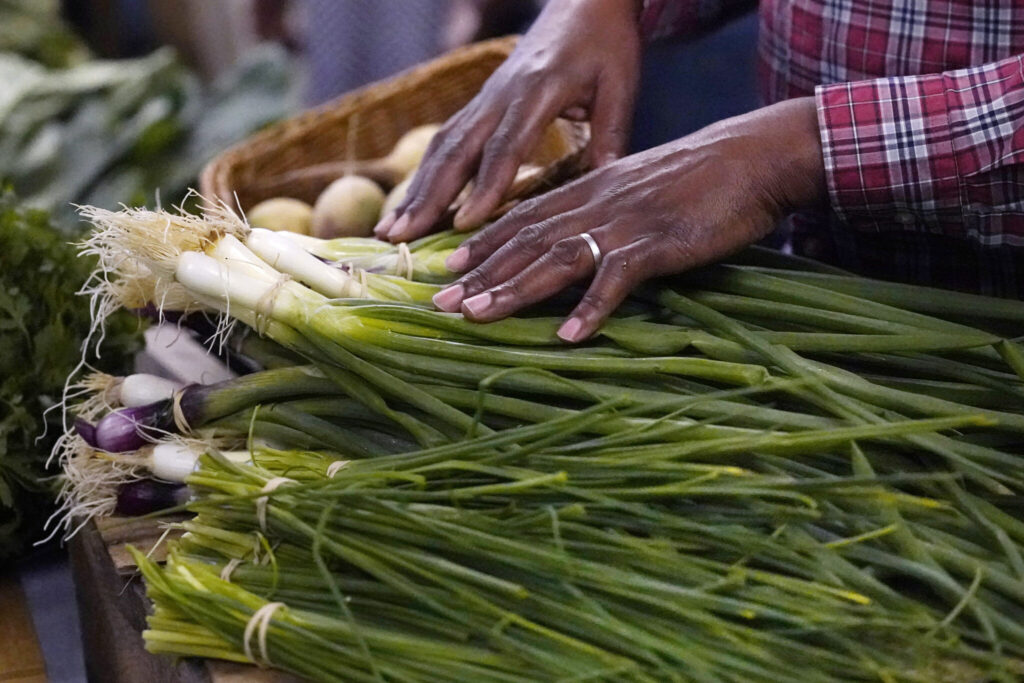A measure of wholesale prices rose more than expected in July, countering recent trends showing that inflation pressures are easing. The producer price index, which gauges the costs that goods and services producers receive for their products as opposed to those that consumers pay, rose 0.3% for the month, the Bureau of Labor Statistics reported Friday. Excluding food and energy, core PPI also increased 0.3%. Economists surveyed by Dow Jones had been expecting an increase of 0.2% for both readings. Excluding food, energy and trade services, PPI increased 0.2%. The Associated Press has the story:
Wholesale inflation in US edged up in July from low levels
Newslooks- WASHINGTON (AP)
Wholesale prices in the United States picked up slightly in July yet still suggested that inflationary pressures have eased this year since reaching alarming heights in 2022.
The Labor Department reported Friday that its producer price index — which measures inflation before it hits consumers — rose 0.8% last month from July 2022. The latest figure followed a 0.2% year-over-year increase in June, which had been the smallest annual rise since August 2020.
On a month-to-month basis, producer prices rose 0.3% from June to July, up from no change from May to June. Last month’s increase was the sharpest since January.
Analysts said the July rise in wholesale prices, from the previous month’s low levels, still reflects an overall easing inflation trend.

The figures the Labor Department issued Friday reflect prices charged by manufacturers, farmers and wholesalers. The figures can provide an early sign of how fast consumer inflation will rise in the coming months. Since peaking at 11.7% in March 2022, wholesale inflation has steadily tumbled in the face of the Federal Reserve’s 11 interest rate hikes.
Excluding volatile food and energy prices, “core” wholesale inflation rose 2.4% from July 2022, the same year-over-year increase that was reported for June. Measured month to month, core producer prices increased 0.3% from June to July after falling 0.1% from May to June.
On Thursday, the government reported that consumer prices rose 3.3% in July from 12 months earlier, an uptick from June’s 3% year-over-year increase. But in an encouraging sign, core consumer inflation rose just 0.2% from June, matching the smallest month-to-month increase in nearly two years.

By all measures, inflation has cooled over the past year, moving closer to the Fed’s 2% target level but still remaining persistently above it. The moderating pace of price increases, combined with a resilient job market, has raised hopes that the Fed may achieve a difficult “soft landing”: Raising rates enough to slow borrowing and tame inflation without causing a painful recession.
Many economists and market analysts think the Fed’s most recent rate hike in July could prove to be its last. Before the Fed next meets Sept. 19-20 to decide whether to continue raising rates, it will review several additional economic reports. They include another monthly report on consumer prices; the latest reading of the Fed’s favored inflation gauge; and the August jobs report.

Inflation began surging in 2021, propelled by an unexpectedly robust bounce-back from the 2020 pandemic recession. By June 2022, consumer prices had soared 9.1% from a year earlier, the biggest such jump in four decades. Much of the price acceleration resulted from clogged supply chains: Ports, factories and freight yards were overwhelmed by the explosive economic rebound.
The result was delays, parts shortages and higher prices. But supply-chain backlogs have eased in the past year, sharply reducing upward pressure on goods prices. Prices of long-lasting manufactured goods actually dipped in June.







